Do Dogs Think Stuffed Animals Are Real? Uncovering the Canine Perception
Have you ever noticed your dog playing with a stuffed animal and wondered if they think it’s real? This is a common question that many dog owners have. The truth is, dogs may not necessarily believe that stuffed animals are real, but they do react to them in ways that suggest they find comfort or entertainment in their presence.
In the complex world of canine cognition, dogs are known for their ability to form emotional connections with both humans and objects. For some dogs, a stuffed animal can become more than just a toy; it can be a companion or source of comfort. On the other hand, some dogs may simply enjoy the act of playing with a stuffed toy, using it as an outlet for their natural instincts such as chewing, fetching, or shaking.
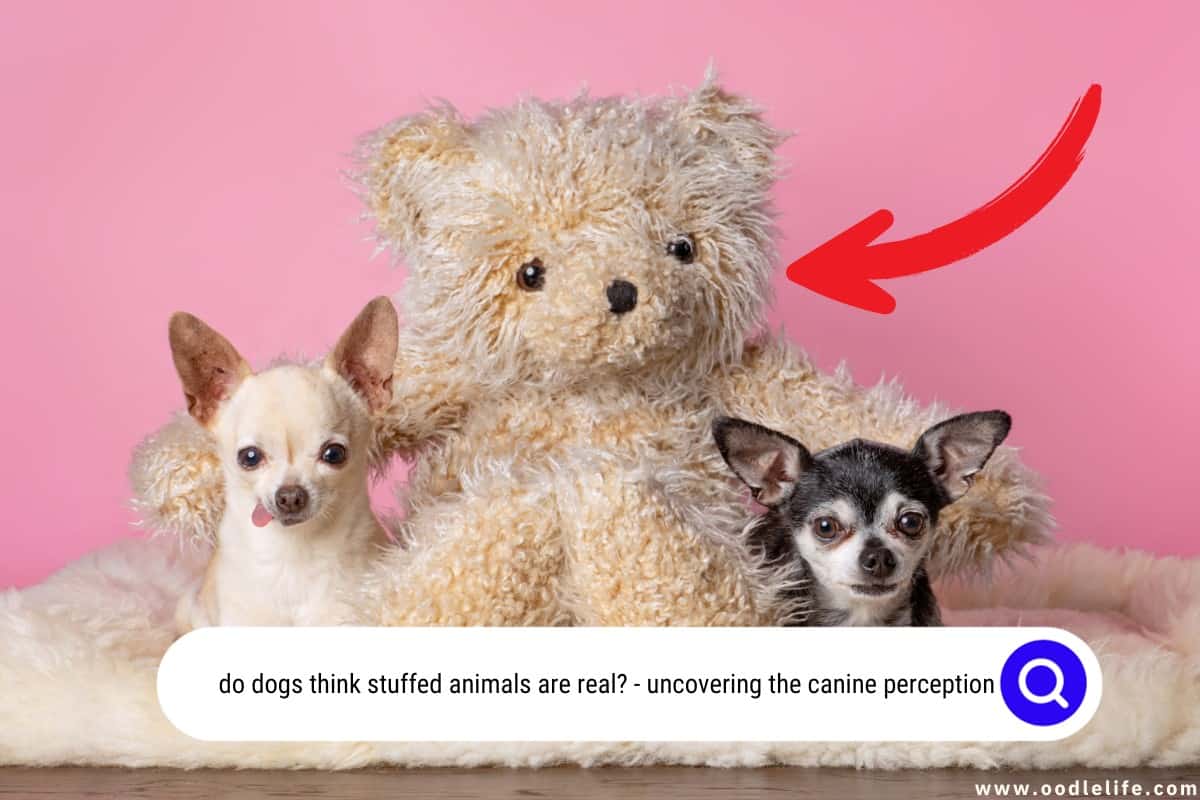
It’s essential to understand that not all dogs perceive stuffed animals in the same way. Factors such as breed, individual personality, and past experiences can influence how a dog might interact with a plush toy. Some dogs may form a strong attachment to their stuffed companions, while others might see them as just another plaything.
So, while your dog may not think a stuffed animal is real, they can still find joy and comfort in their presence.
Canine Perception of Toys
Dogs have a unique way of perceiving their environment and the objects within it, including toys and stuffed animals. It’s important to understand how your dog views these items in order to provide the best possible playtime experiences for them.
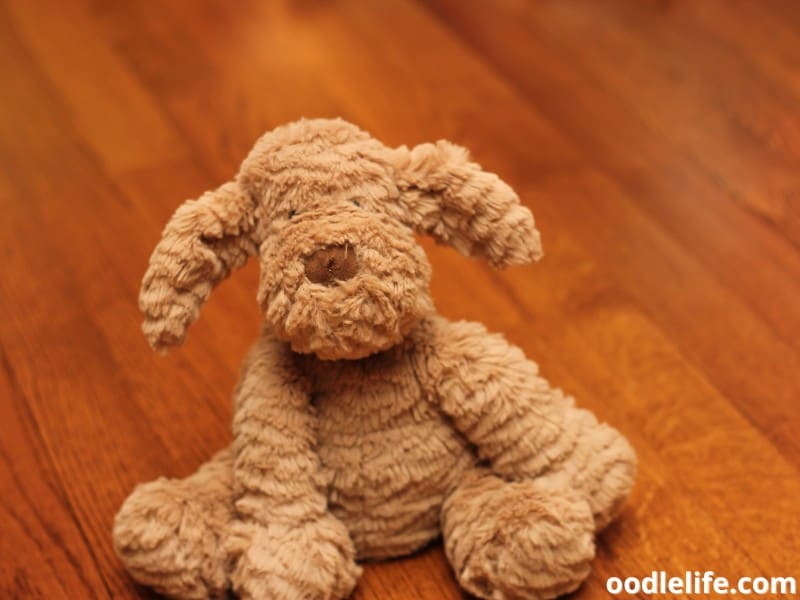
One aspect of a dog’s perception involves their ability to differentiate between real animals and stuffed toys. In a study on jealousy in dogs, it was observed that some dogs reacted to a stuffed dog as if it were a real animal, showing signs of jealousy when their owners interacted with the toy dog. This suggests that, in certain situations, dogs may perceive stuffed animals as real.
However, it’s worth noting that not all dogs will have this reaction. Variables such as temperament, breed, and individual personality can influence how a dog responds to a stuffed animal. Additionally, the realism of the toy, its scent, and its texture can impact a dog’s perception of it.
When selecting toys for your dog, it’s important to consider their preferences and behaviors. Some dogs may prefer stuffed toys that resemble real animals, while others may be more interested in toys designed for specific activities, such as tugging or fetching. Your dog’s response to a stuffed animal can be informative in understanding their overall behavior and preferences.
Remember that dogs are social creatures, and their interactions with toys can be a valuable form of enrichment and mental stimulation. However, it’s essential to monitor your dog’s playtime closely, especially if they display behaviors indicating that they perceive a stuffed toy as a real animal. In such cases, it’s crucial to encourage appropriate behaviors and ensure a safe play environment for your furry friend.
Do Dogs Perceive Stuffed Animals as Real?
Studies and Research Findings
When it comes to understanding how dogs perceive stuffed animals, various studies shed light on this topic. One such study titled “Jealousy in Dogs” indicated that dogs could potentially believe that a stuffed animal is a real dog. Participants in the study were asked if their dog would react to a stuffed dog, and the majority of the dogs displayed jealous behavior over the toy.
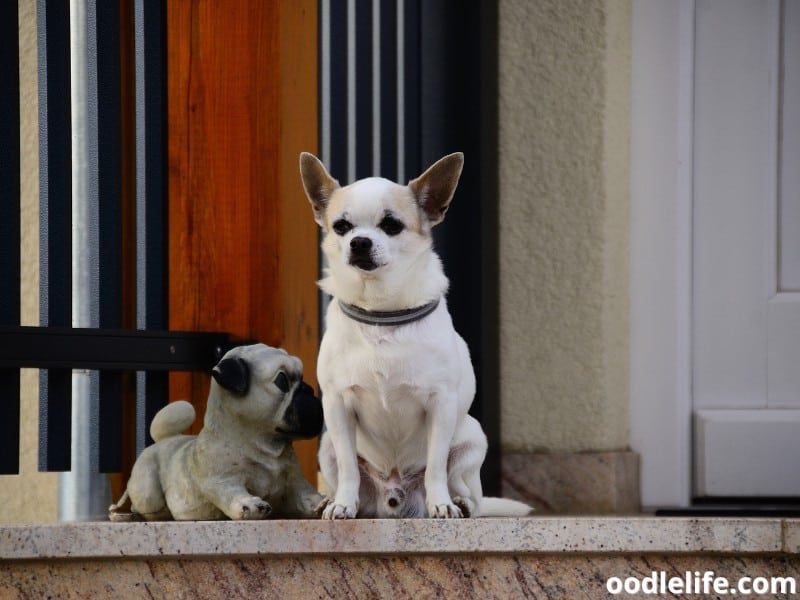
In another study called “The Effect of a Real Dog, Toy Dog and Friendly Person on Insecurely Attached Children during a Stressful Task,” researchers noticed that dogs still reacted positively towards toy dogs, indicating that they might still perceive them as real dogs to some extent. However, the extent to which dogs perceive a stuffed animal as a real dog might differ from one dog to another.
Moreover, research in the field of animal-assisted therapy has looked into how real dogs and robot dogs affect dementia patients. While the study mainly focused on the patients, it is worth noting that real dogs and robots were able to coexist and interact with patients without any conflict. This could further suggest that dogs may not always differentiate between toy and real dogs.
Additionally, some dogs might not perceive stuffed animals as real dogs but rather as objects for play and chew on them. In these situations, it’s essential for you, as a dog owner, to monitor your dog’s interaction with stuffed toys to prevent any potential harm.
Overall, while the studies provide some insights, they also highlight the complexity of understanding how dogs perceive stuffed animals. As research on this subject continues to grow, we will gain a deeper understanding of how dogs interact with and perceive these toys.
How Dogs Interact With Stuffed Toys?
Growling at Toys
Sometimes you might notice your dog growling at a stuffed toy. This behavior can initially be concerning, but it’s essential to understand the context and your dog’s body language. Growling can be a form of play, demonstrating your dog’s hunting instincts.
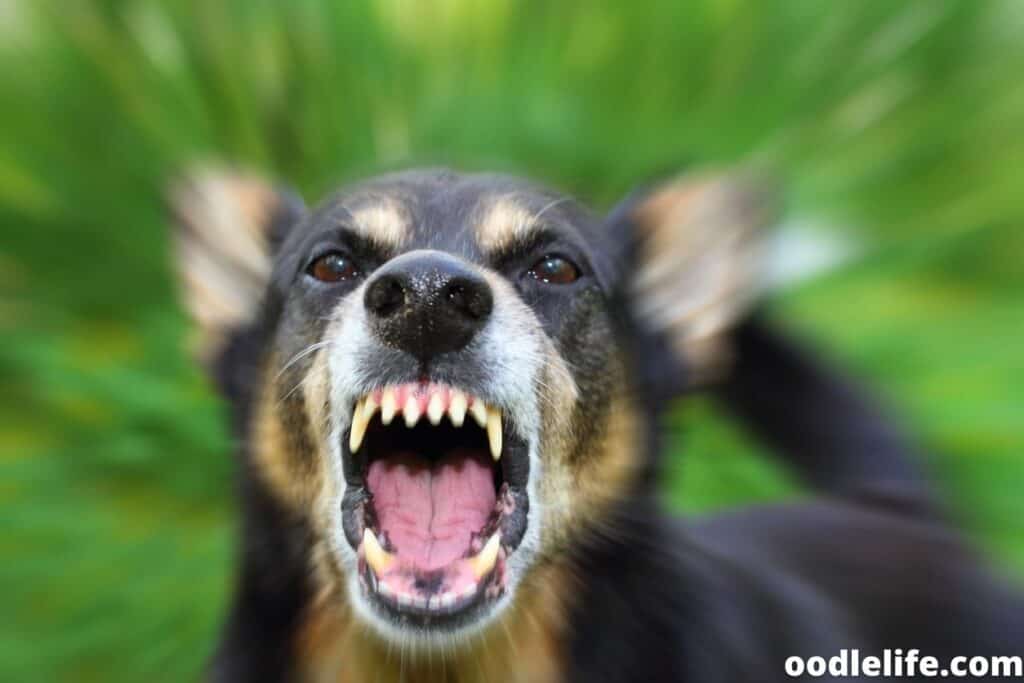
It’s important to observe if the growling is accompanied by aggressive behavior, such as barking or showing teeth. If not, your dog could be just having fun and engaging in a healthy play session.
Biting and Shaking Toys
Biting and shaking toys is another way dogs interact with stuffed animals. This behavior is linked to their hunting instincts, as they would do the same to catch prey in the wild. To encourage appropriate play with toys, you can use positive reinforcement.
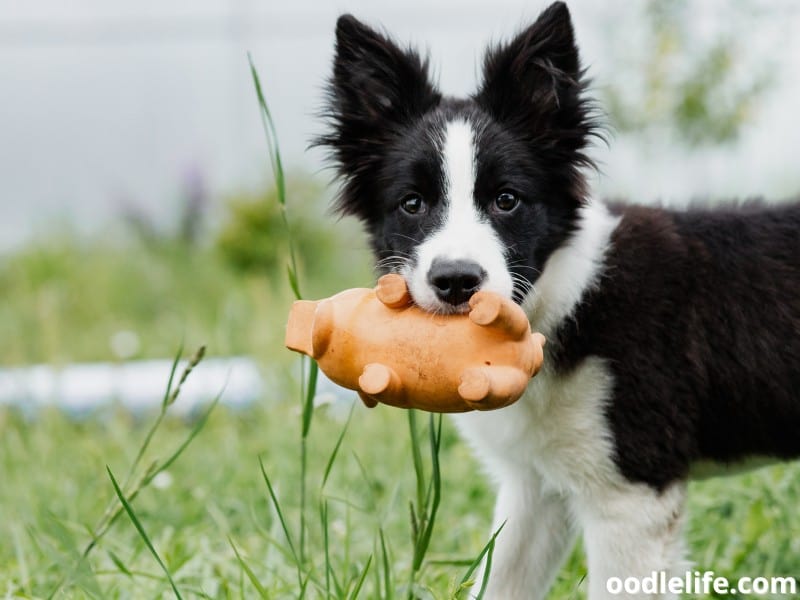
Reward your dog when they play nicely with their toys and redirect them when they display aggressive behavior. A well-trained dog with a proper outlet for their energy is less likely to exhibit undesirable behaviors.
Showing Affection to Toys
On the other hand, your dog may show affection towards their stuffed toys. They might snuggle with them, carry them around, or even groom them. This behavior might indicate that your dog sees the toy as a companion or a source of comfort.
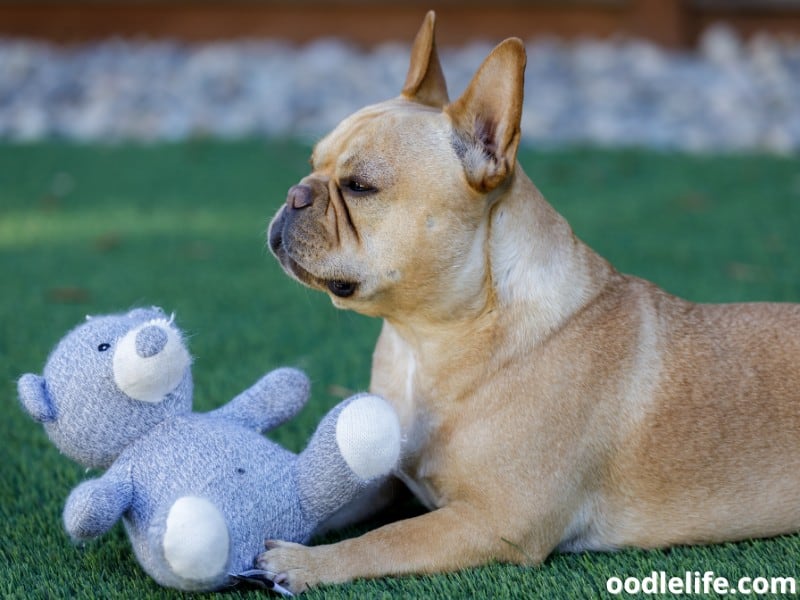
However, be cautious about over-attachment, as it could potentially lead to separation anxiety or possessiveness.
In conclusion, dogs have various ways of interacting with stuffed toys, and it’s crucial to evaluate the situation, body language, and context when determining if their behavior is healthy or if it requires intervention. Foster positive and fun playtime for your dog with their stuffed toys by using proper reinforcement techniques and understanding their instincts.
The Role of Dog’s Personality on Their Perception of Stuffed Animals
When it comes to how your dog perceives a stuffed animal, their individual personality plays a significant role. Just as human personalities vary, so do the personalities of dogs. This means that different dogs will interact and perceive stuffed animals in their own unique way.
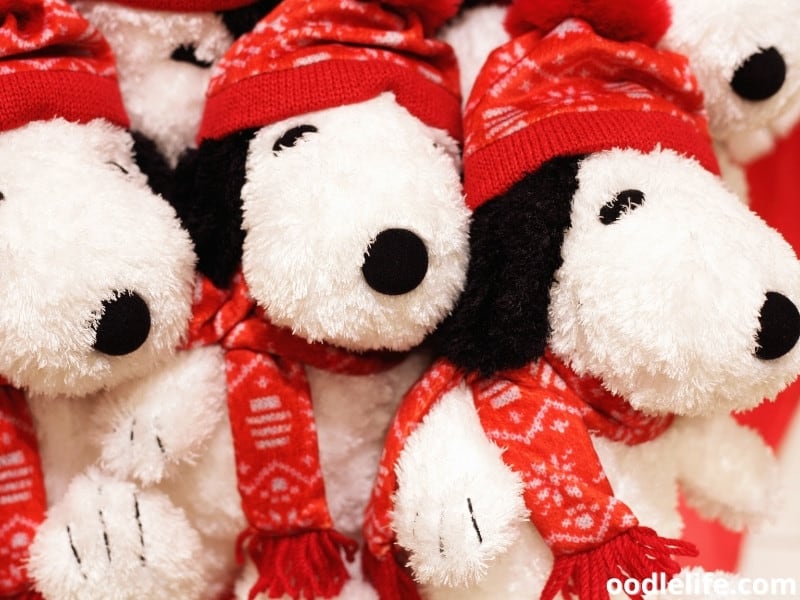
For some dogs, their inquisitive nature might lead them to be more curious about a stuffed animal. They may sniff, paw, or play with the toy as they try to determine whether or not it is a real animal. This curiosity could stem from a variety of factors, such as their breed, upbringing, or personal experiences.
On the other hand, your dog’s temperament could result in them being more cautious around stuffed animals. Some dogs might regard a plush toy with suspicion, while others might display indifference. A more fearful dog may see the stuffed animal as a potential threat, causing them to avoid it or even react defensively.
Socialization also plays a part in how your dog perceives toys like stuffed animals. Dogs that have been exposed to a variety of experiences, including interactions with other dogs and objects, tend to be better equipped to discern between what is real and what isn’t. A well-socialized dog might even recognize a stuffed animal as a toy meant for play.
Furthermore, breeds that have been specifically bred for certain traits and behaviors may show different reactions to a stuffed animal. For example, herding breeds might attempt to “round up” the toy, while hunting breeds may be intrigued by its scent or appearance. Ultimately, whether or not your dog perceives the stuffed animal as real is largely influenced by their own unique personality and experiences.
Remember, no specific conclusion can be drawn about all dogs, as each dog’s perception of a stuffed animal is driven by their own personality. By understanding your dog’s unique personality and observing their behavior, you can better appreciate their perception of the world around them, including that of stuffed animals.
Underlying Factors Influencing Dogs’ Interactions with Toys
Training Influence
When it comes to your dog’s interaction with stuffed animals, the training you provide can play a significant role. How you use these toys during training sessions can help shape your dog’s perception of them. For instance, using a stuffed animal as a reward for obeying a command can encourage positive associations with the toy.
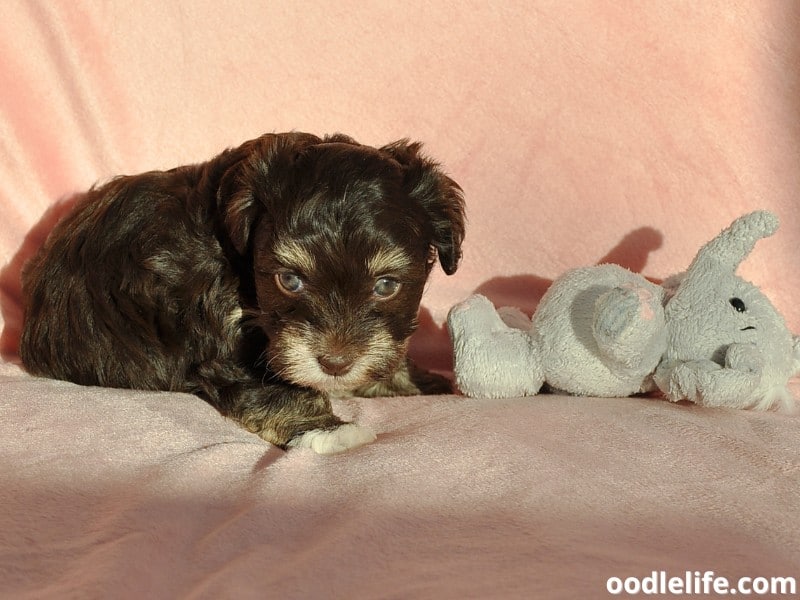
In contrast, if you scold your dog for chewing on a stuffed animal, they may learn to avoid them or treat them with caution.
Companionship Factor
Dogs are social animals, and they often seek companionship. Stuffed animals can serve as a kind of surrogate friend for your dog when you’re unavailable. This companionship can help reduce feelings of loneliness and help to alleviate anxiety in your pet.
Just as children might be attached to a stuffed animal, your dog might find comfort in having a constant, soft, and cuddly friend by its side.
Security and Comfort Reason
Stuffed animals can also provide a sense of security and comfort for your dog. The soft texture and familiar scent of a cherished stuffed toy can help calm an anxious or nervous dog. For example, if your dog suffers from separation anxiety, having their favorite stuffed animal nearby might provide a sense of familiarity and stability when you’re away, making them feel safer.
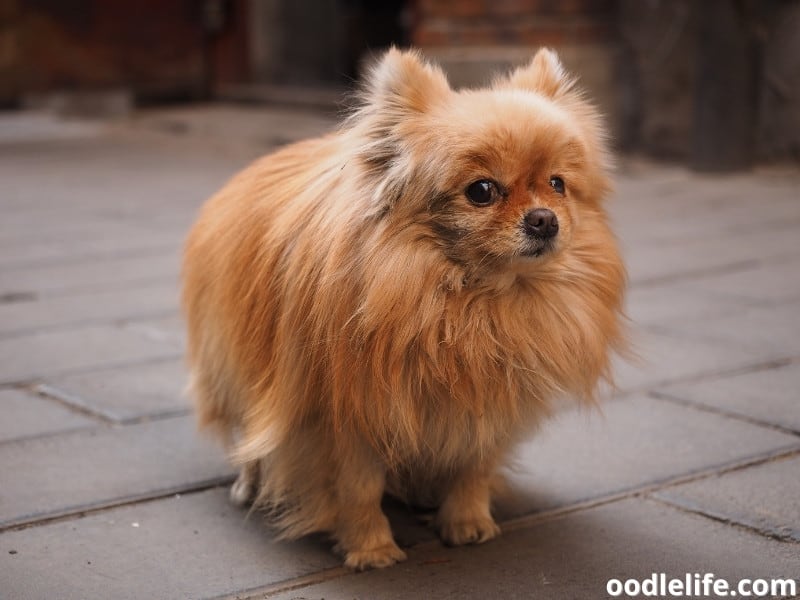
Mental Stimulation Purpose
Finally, mental stimulation is an essential aspect of your dog’s well-being. Stuffed toys can serve as a means to engage your dog’s mind and keep them entertained. Toys that include squeakers, crinkle material, or other interactive components can offer an exciting and captivating experience for your dog.
Regular play with these toys can help prevent boredom, which can, in turn, reduce the chances of developing destructive behaviors.
Remember that while interacting with stuffed animals, your dog’s actions will be influenced by various factors such as training, companionship, comfort, security, and mental stimulation. By understanding these factors, you can ensure your dog’s interactions with stuffed toys are positive and beneficial for both their mental and emotional health.
Health and Safety Concerns with Stuffed Toys
When it comes to stuffed toys for your dogs, you should be aware of the potential safety hazards they pose. Even though they might seem like a harmless addition to your pet’s playtime routine, there are certain risks involved.
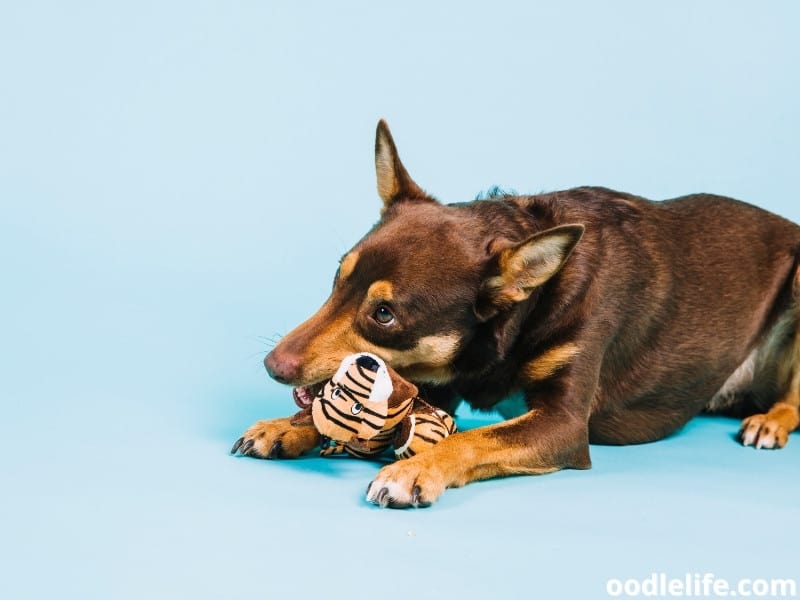
Firstly, you must ensure the stuffed toys you choose are specifically designed for dogs. Toys intended for human children might not be as resistant to biting and chewing, which can result in the toy breaking or tearing. When this occurs, small parts, such as buttons or plastic eyes, can become choking hazards for your pet.
Always opt for toys without small, detachable components.
Secondly, your dog may mistake a stuffed toy for real prey. Although dogs have a natural instinct to hunt, they might have difficulty differentiating between a plush animal and a real-life counterpart. However, it is important to remember that dogs are domesticated animals and their hunting instincts have been somewhat subdued.
It might be helpful to introduce the stuffed toys in a controlled environment, and monitor your dog’s interactions with them, to prevent any confusion or unwanted aggression.
In addition to choosing the right toy, it is essential to inspect them regularly. Over time, even the most durable stuffed toys can start showing signs of wear and tear. The toy’s stuffing, if ingested, can cause gastrointestinal blockages, leading to serious health issues.
Monitoring and replacing damaged toys will help ensure your dog’s safety.
Hygiene is another concern when it comes to stuffed toys. A slobber-covered or dirty toy can harbor bacteria, leading to infections or the spread of diseases. Be sure to wash and sanitize them regularly, following the manufacturer’s guidelines.
To summarize, keep these points in mind while selecting and maintaining stuffed toys for your dogs:
- Choose toys designed specifically for dogs
- Avoid toys with small, detachable parts
- Monitor introductions and interactions with new stuffed toys
- Inspect, repair, and replace damaged toys as necessary
- Maintain hygiene by regularly washing and sanitizing the toys
By following these guidelines, you can provide your furry companion with a safe and enjoyable playtime experience involving stuffed toys.
How to Use Stuffed Animals for Positive Reinforcement?
Measuring Playtime Intensity
To utilize stuffed animals for positive reinforcement, start by observing how your dog interacts with the toy. Pay attention to their playtime intensity and whether they exhibit any specific preferences or behaviors towards it. For example, some dogs may be more interested in toys that squeak, while others might prefer soft, plush textures.
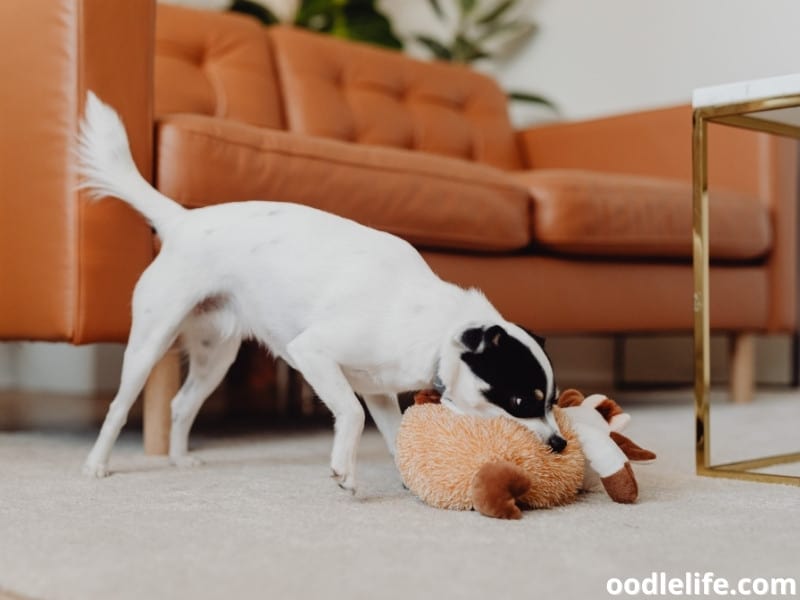
During playtime, measure your dog’s enthusiasm and engagement with the toy. You can keep track of the time they spend playing with it, how frequently they return to it, or even the level of intensity they exhibit while interacting with the toy. This will give you a baseline understanding of your dog’s interest in the stuffed animal and help you gauge how effective it can be as a tool for positive reinforcement.
Using Toys for Training
Incorporating stuffed animals into your training routine can foster a positive and enjoyable learning experience for your dog. To do this, identify a desirable behavior or skill you want to teach your pet, and use the toy as a reward when they perform that behavior.
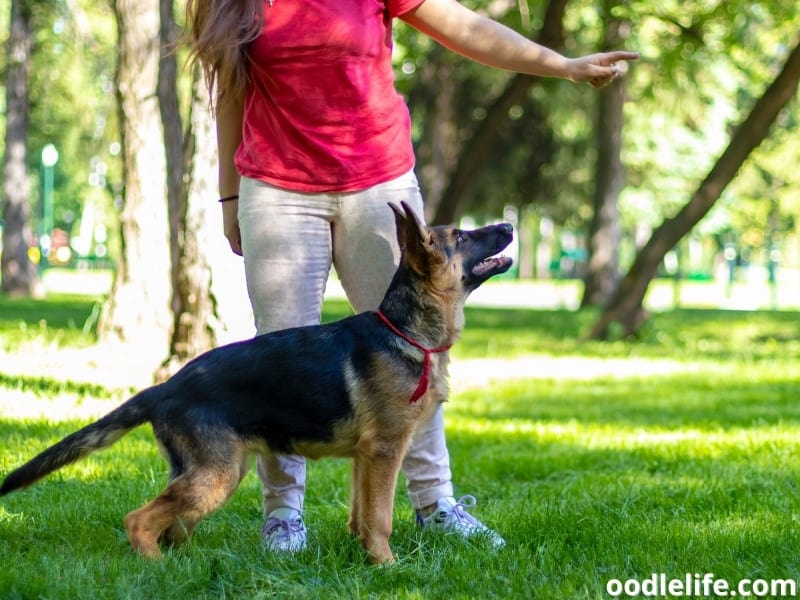
For example, if you’re teaching your dog to sit, present the stuffed animal as a reward when they follow the command. This will not only encourage your dog to repeat the desired behavior, but it will also help them associate the toy with positive experiences and reinforcement.
To make the most of this approach, try the following tips:
- Choose the right toy: Select a stuffed animal that your dog is particularly fond of to serve as an effective motivator and reinforcement tool.
- Establish clear signals: Ensure your dog understands what is expected of them by giving clear, consistent commands and signals during training sessions.
- Maintain a positive atmosphere: Keep training sessions enjoyable and lighthearted, fostering a positive learning environment for your pet.
- Be patient and consistent: Just like learning any new skill, training your dog with stuffed animals may require time and consistent effort. Be patient with your dog, and remember that the goal is to create a positive experience for your pet.
Incorporating stuffed animals into your dog’s training and playtime routines can be a fun and engaging way to provide positive reinforcement. By measuring your dog’s playtime intensity, using toys for training, and maintaining a positive atmosphere, you can help improve your pet’s learning experience and foster a happy, well-adjusted canine companion.
Unique Behaviors Associated with Stuffed Toys
False Pregnancy Symptoms
Dogs, especially female ones, might exhibit false pregnancy symptoms when around stuffed animals. False pregnancy, also known as pseudopregnancy, occurs when a dog’s body mimics the hormonal changes seen during pregnancy, even though she’s not actually pregnant. The presence of a stuffed toy can trigger these maternal instincts in some dogs, causing them to treat the toy as if it were their own offspring.
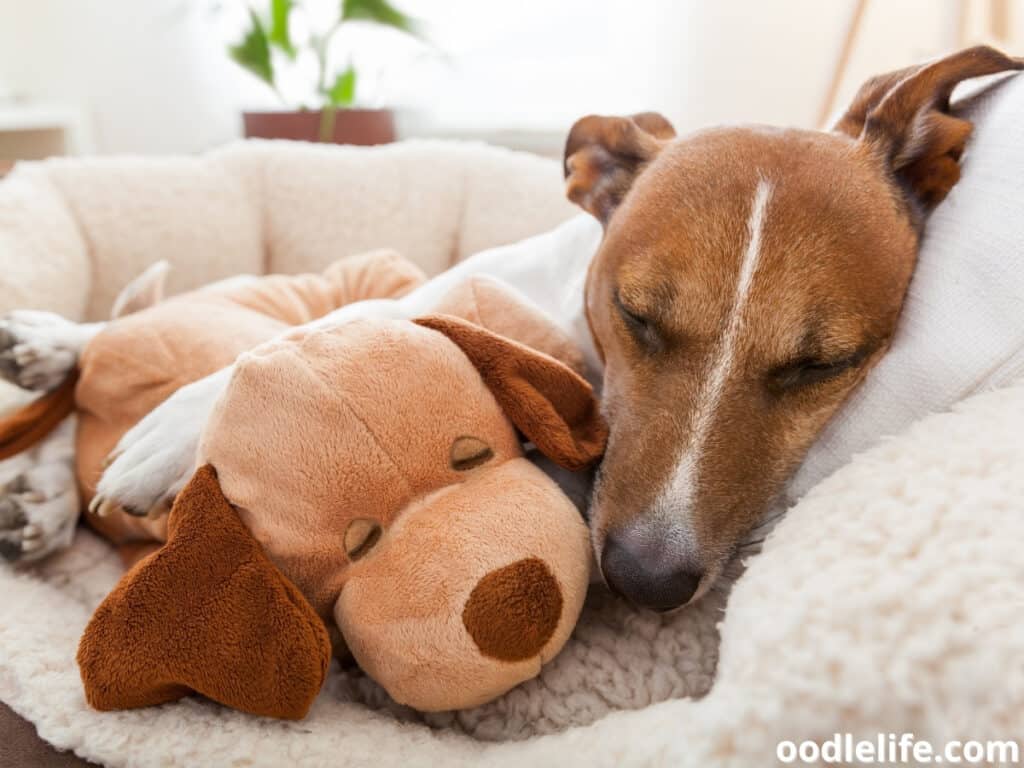
For example, your dog might carry the stuffed animal around with them, snuggle with it, or even attempt to nurse it. They could also become more protective, anxious, or obsessive about the toy. Be aware of these behaviors, as they could potentially lead to stress or anxiety in your dog if not handled properly.
Over-attachment Issues
Another unique behavior associated with dogs and stuffed animals is over-attachment. Dogs might form strong emotional bonds with their stuffed toys, treating them like companions or relying on them for comfort. Sometimes, this attachment can go beyond the healthy level, leading to over-attachment issues.
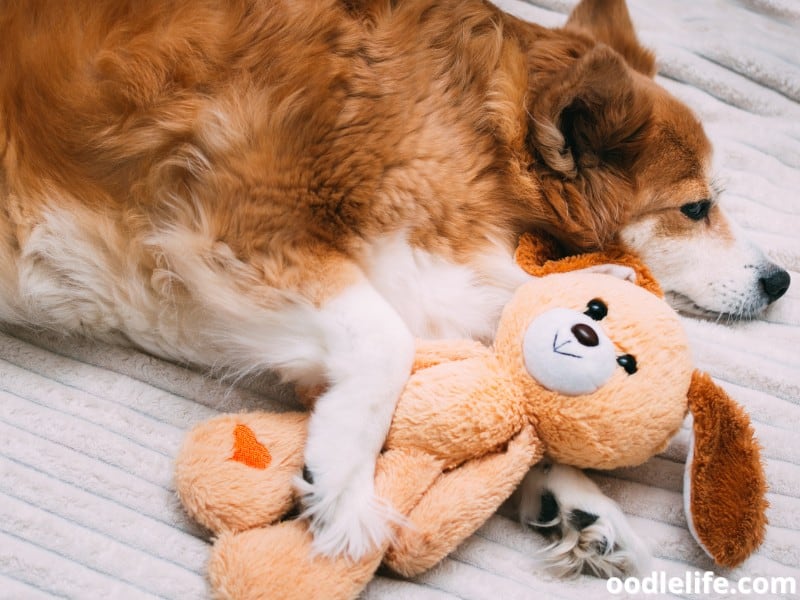
Over-attachment to a stuffed toy can manifest in a variety of ways. Your dog might:
- Become anxious or stressed when separated from the toy
- Display possessiveness or aggression when someone tries to take it away
- Become fixated on the toy, playing or cuddling with it to the exclusion of other activities
- Show signs of depression or lethargy if the toy is out of reach or missing
In order to help your dog maintain a healthy relationship with their stuffed animal, it’s crucial to monitor their behaviors closely and address any potential issues before they escalate. For example, you can encourage healthy play and socialization with other dogs or introduce new toys to help them form a more balanced attachment.
By understanding these unique behaviors associated with stuffed toys, you can better support your dog’s emotional needs and well-being. Keep an eye on your dog’s interaction with their stuffed friends, and make sure to intervene if necessary to maintain a healthy balance.
Benefits of Stuffed Toys for Dogs
When it comes to providing your dog with entertainment and comfort, stuffed animals can be an excellent addition to their collection of toys. These cuddly companions offer several benefits for your furry friend, which are discussed below.

Playtime and Mental Stimulation: Stuffed toys can keep your dog physically active and mentally stimulated by prompting them to play. These toys can act as prey during games of fetch or tug-of-war, satisfying their natural hunting instincts. This type of play can help prevent boredom, curb destructive behaviors, and keep your dog’s mind sharp.
Comfort and Security: Dogs often seek companionship and comfort, and a stuffed animal can provide that in your absence. Many dogs form strong bonds with their stuffed toys, snuggling with them during nap time or carrying them around the house. This can help to create a sense of security and reduce anxiety when you’re away from home.
Companionship and Socialization: Stuffed animals can also serve as surrogate playmates for dogs, especially when they don’t have access to other canine friends. This can be particularly beneficial for dogs who are socially timid or those who need time to adjust to a new environment. By providing a safe and non-threatening playmate in the form of a stuffed toy, you can help your dog build confidence and social skills.
In conclusion, stuffed animals can offer numerous benefits for dogs, including playtime, mental stimulation, comfort, security, and companionship. By introducing these toys into your dog’s life, you can create a more enriching environment for your furry friend, while also potentially improving their overall well-being.